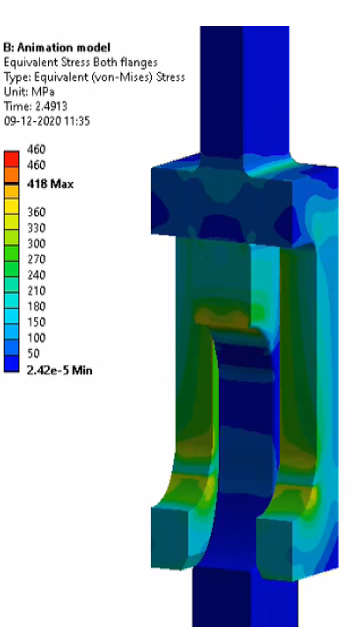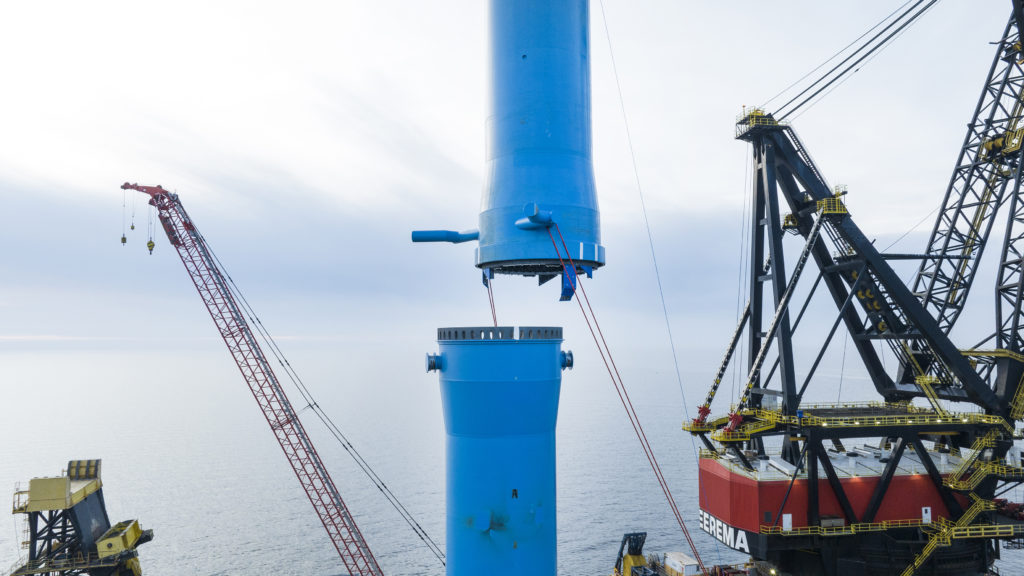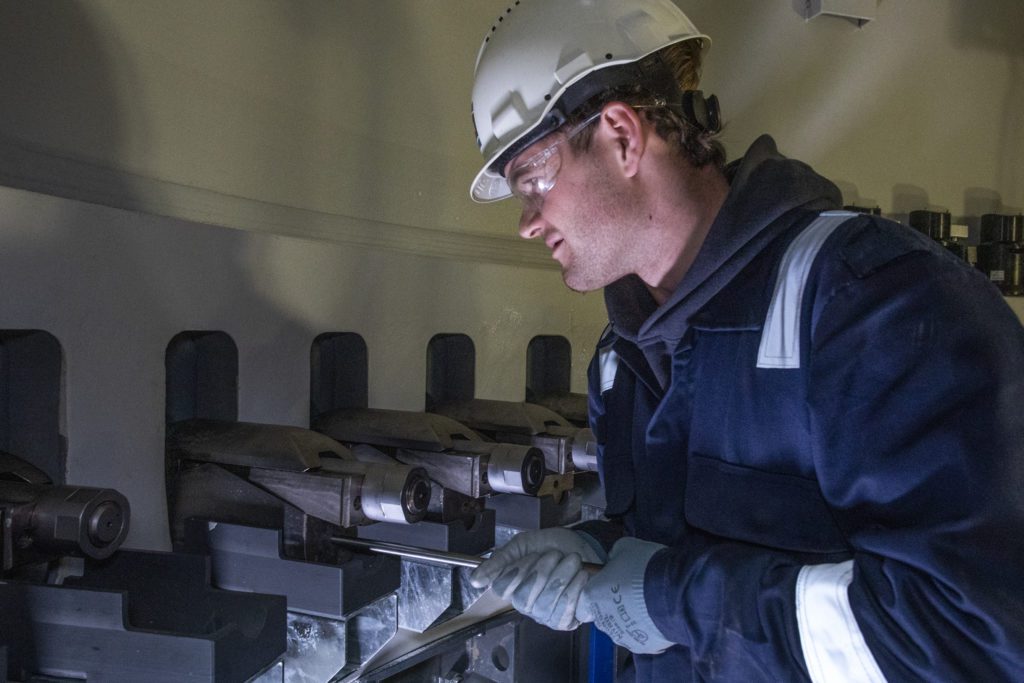Innovative technology
A C1 Wedge Connection™ uses a fork-shaped upper flange and a shaft-shaped lower flange with radial elongated holes in both flanges.
A fastener assembly is placed in these holes. The fastener has an upper and lower block with wedge shaped center blocks. The upper and lower block move apart when the two wedges are pulled together. This creates a preloaded interface between the upper and lower flanges.
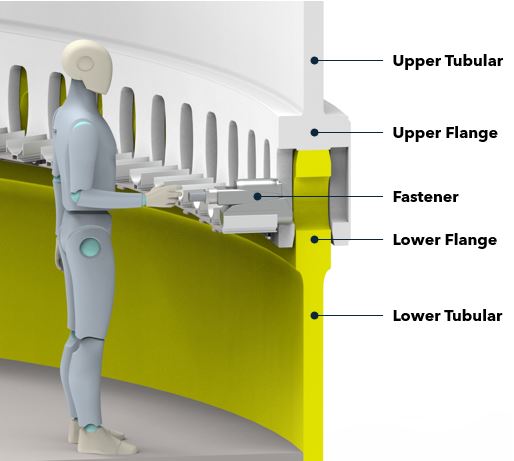
Installation steps
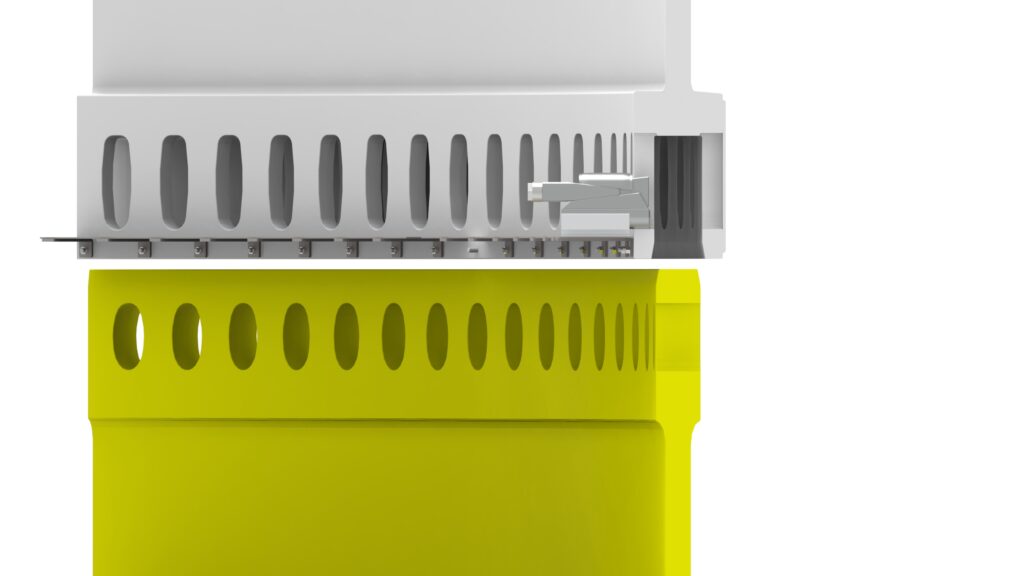
Install Flanges
The connection features an integrated alignment system and chamfers on both flanges. This system ensures proper alignment of the flanges during lowering of the top tubular.

Push in Fasteners
C1 Fasteners are pre-installed on the Upper Flange and are pushed into the elongated holes in the flanges.
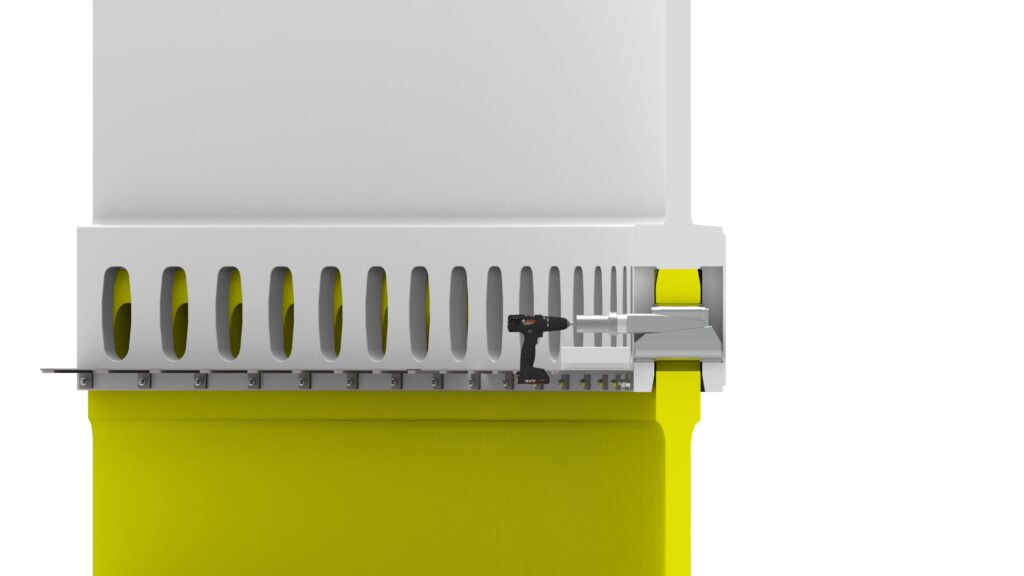
Install Fasteners
The Fasteners are run-down with a standard hand-held, battery-powered driver. Afterwards, small hand-held tensioners are used to create the final preload.
Efficient load transfer
The main load fluctuations in the C1 Wedge Connection™ go through base material, resulting in a superior fatigue resistance. The ULS capacity of the connection is governed by the wall thickness of the lower tubular. Therefore, the C1 Wedge Connection™ can easily be scaled to load levels that exceed any bolted flange connection. This means that the structure’s diameter may be reduced for the same overturning moment loads.
The symmetric design of the connection prevents opening under high load, simplifying design and sealing of the connection.
